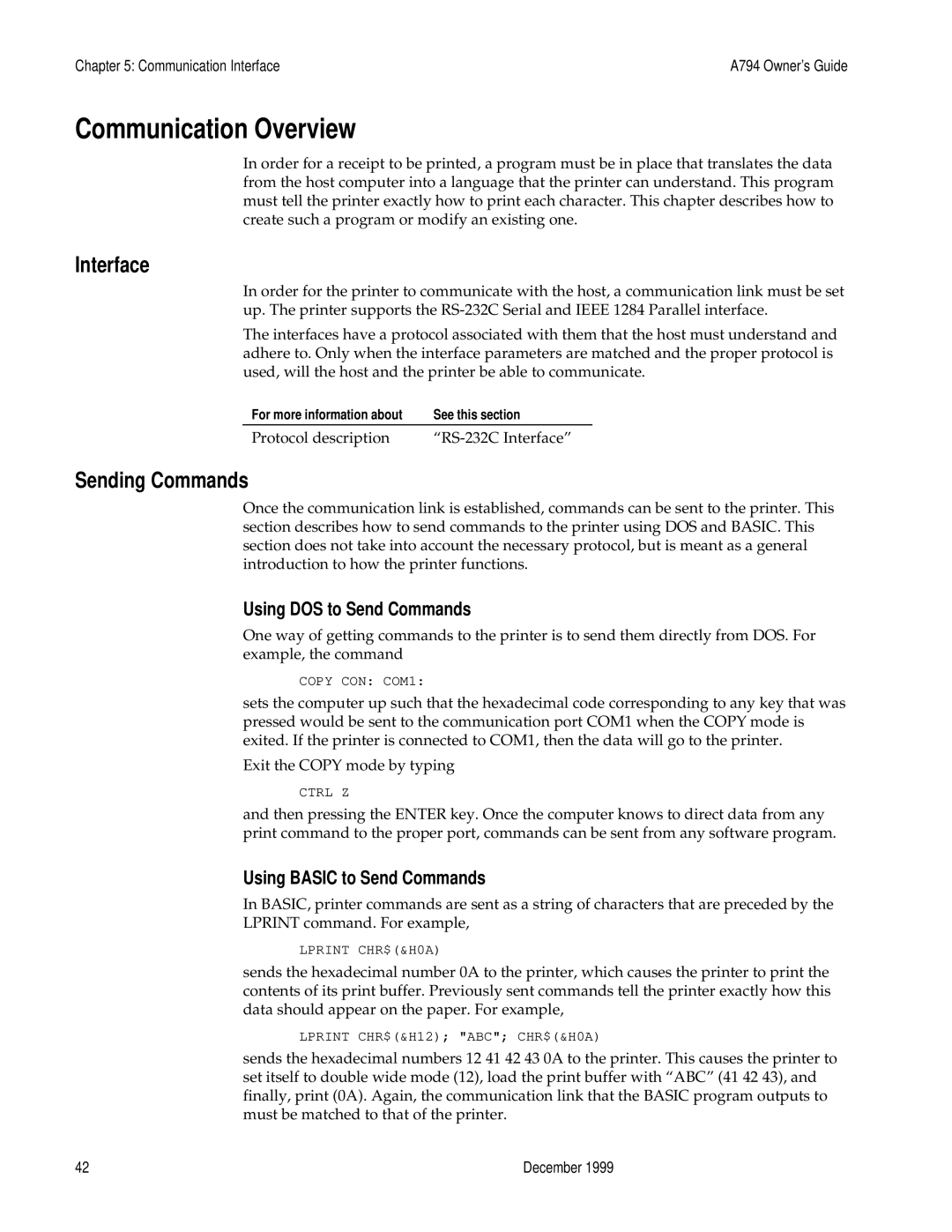Chapter 5: Communication Interface | A794 Owner’s Guide |
Communication Overview
In order for a receipt to be printed, a program must be in place that translates the data from the host computer into a language that the printer can understand. This program must tell the printer exactly how to print each character. This chapter describes how to create such a program or modify an existing one.
Interface
In order for the printer to communicate with the host, a communication link must be set up. The printer supports the
The interfaces have a protocol associated with them that the host must understand and adhere to. Only when the interface parameters are matched and the proper protocol is used, will the host and the printer be able to communicate.
For more information about | See this section |
Protocol description |
Sending Commands
Once the communication link is established, commands can be sent to the printer. This section describes how to send commands to the printer using DOS and BASIC. This section does not take into account the necessary protocol, but is meant as a general introduction to how the printer functions.
Using DOS to Send Commands
One way of getting commands to the printer is to send them directly from DOS. For example, the command
COPY CON: COM1:
sets the computer up such that the hexadecimal code corresponding to any key that was pressed would be sent to the communication port COM1 when the COPY mode is exited. If the printer is connected to COM1, then the data will go to the printer.
Exit the COPY mode by typing
CTRL Z
and then pressing the ENTER key. Once the computer knows to direct data from any print command to the proper port, commands can be sent from any software program.
Using BASIC to Send Commands
In BASIC, printer commands are sent as a string of characters that are preceded by the LPRINT command. For example,
LPRINT CHR$(&H0A)
sends the hexadecimal number 0A to the printer, which causes the printer to print the contents of its print buffer. Previously sent commands tell the printer exactly how this data should appear on the paper. For example,
LPRINT CHR$(&H12); "ABC"; CHR$(&H0A)
sends the hexadecimal numbers 12 41 42 43 0A to the printer. This causes the printer to set itself to double wide mode (12), load the print buffer with “ABC” (41 42 43), and finally, print (0A). Again, the communication link that the BASIC program outputs to must be matched to that of the printer.
42 | December 1999 |
